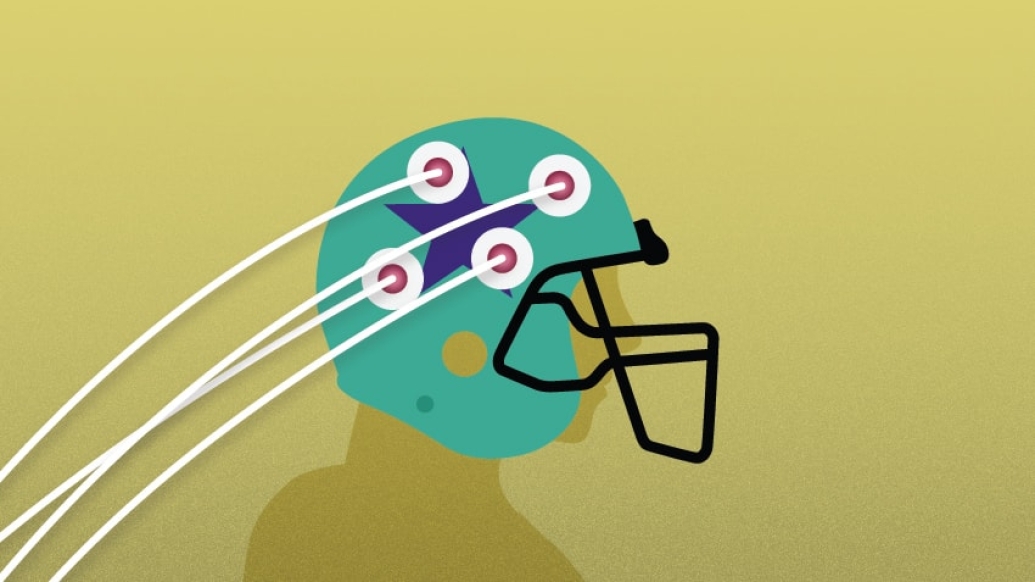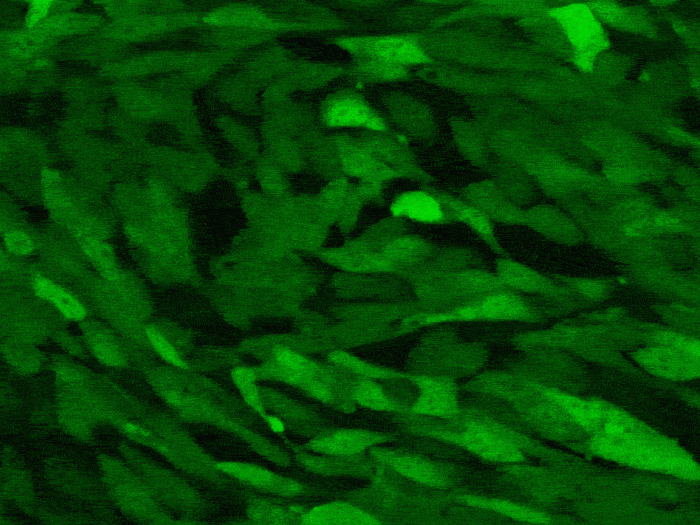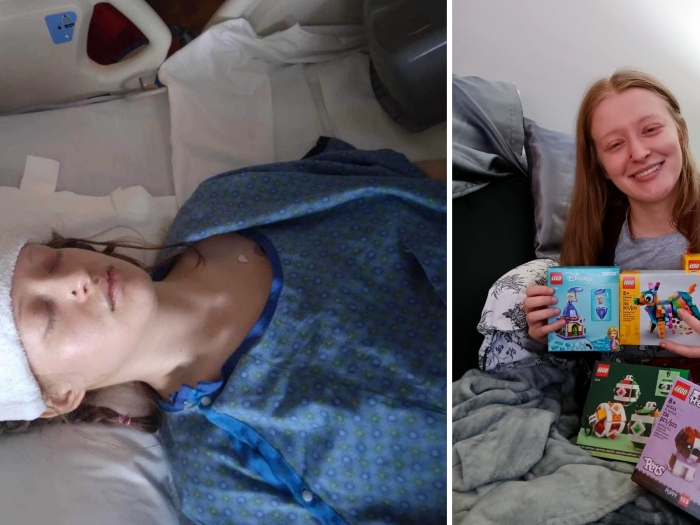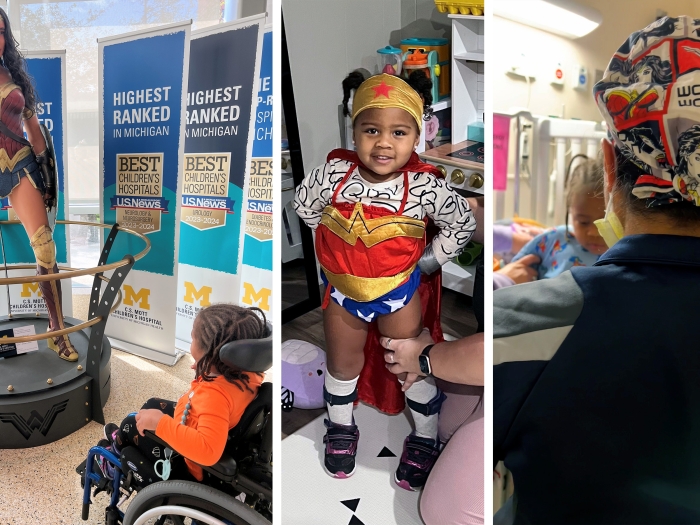Even without symptoms of concussion, researchers studying high school football players found two elevated biomarkers that are associated with brain injury.
12:00 PM
Author |

After a head-butting during high school football, coaches or athletic trainers talk with the athlete and determine if the player will sit out the rest of the game. But a new study shows this might not be enough because the subtle symptoms of head trauma can elude coaches and players alike.
LISTEN UP: Add the new Michigan Medicine News Break to your Alexa-enabled device, or subscribe to our daily audio updates on iTunes, Google Play and Stitcher.
"In high school football players, there is biochemical evidence of brain injury after a single high-impact hit to the head, even when the athlete is asymptomatic," says Jacob Joseph, M.D., a neurosurgery resident at Michigan Medicine and lead author of a new study in the Journal of Neurosurgery.
The study is the first to show the association between biomarkers for brain injury and a high-magnitude head impact that does not result in a diagnosable concussion — an issue because millions of kids play high school football, and prior research shows less than half reported their symptoms after a head injury. Continuing to play after an undiagnosed and untreated concussion can have negative effects on academic and job performance.
The study involved 11 varsity high school football players who wore helmets equipped with accelerometers. When the helmets detected a high-acceleration head impact, the information was transferred to a computer on the sidelines. After that impact, a blood test was taken. In addition, blood tests were taken at the start and end of the football season.
We're trying to understand how biomarkers work and which ones work at certain points of time.Steven Broglio, Ph.D., ATC
Researchers found a 740 percent increase in ubiquitin C-terminal hydrolase L1 (UCH-L1), a biomarker of neuronal injury, and a 500 percent increase in the tau biomarker for axonal injury. After the last game of the football season, the same markers were still increased, albeit at lower levels, among those athletes.
Interestingly, other team members who did not have a high-accelerated head impact also had an increase in the two biomarkers. Their UCH-L1 went up 240 percent, and the tau increased 160 percent.
"We don't know if the elevation was a result of participation in football or running around the field wearing helmets. In addition, we don't know how much a biomarker has to go up for it to be bad," says Steven Broglio, Ph.D., ATC, associate professor of kinesiology and senior author of the study.
MORE FROM THE LAB: Subscribe to our weekly newsletter
Prior research with boxers demonstrated an elevation of tau after a match though the boxers weren't diagnosed with mild traumatic brain injury, or mTBI. Conversely, elevated tau was associated with mTBI in pediatric patients and professional hockey players.
"We're trying to understand how biomarkers work and which ones work at certain points of time — two hours post-injury or three days post-injury," Broglio says. "Plus, not everyone responds in the same way to concussion. In addition, we haven't compared the biomarkers in other athletes, such as swimmers, who don't have high-impact blows to their heads.
"At this point, we can't diagnose brain injury based on just these two biomarkers," Broglio says. "We don't think it will be a single biomarker or combination of five biomarkers. There may be a dozen biomarkers for brain injury; and recently, other researchers found another biomarker we didn't know existed when our project started."
Key takeaways
In the meantime, coaches and athletic trainers are advised to play it safe. After an athlete takes a big hit, consider making a no-play call for the rest of the game.
"If you see a kid that has a big head impact and the crowd empathizes with a loud 'ohhhh!' check with a doctor even if there are no concussion symptoms. We see evidence that those big hits, obvious to everyone in the crowd, may cause problems," Joseph says.
SEE ALSO: Focusing on 'Golden Hours' of Care to Improve Traumatic Brain Injury Outcomes
The next research step will be to have large-scale prospective trials that look at the whole host of biomarkers, the profile for each and which can be used at which time points.
When researchers understand more about brain injury biomarkers, there may be a point-of-care device that could be used on the sidelines to take a blood test. Until then, athletic trainers and coaches may be left holding the ball.
Additional authors include Jennylee S. Swallow; Kylene Willsey, M.D.; Andrew P. Lapointe; Shokoufeh Khalatbari; Frederick K. Korley, M.D.; Mark E. Oppenlander, M.D.; Paul Park, M.D.; and Nicholas J. Szerlip, M.D.
Support was provided by the American Association of Neurological Surgeons and Congress of Neurological Surgeons Joint Section in Neurotrauma & Critical Care Codman Fellowship for Jacob R. Joseph.

Explore a variety of healthcare news & stories by visiting the Health Lab home page for more articles.

Department of Communication at Michigan Medicine
Want top health & research news weekly? Sign up for Health Lab’s newsletters today!





